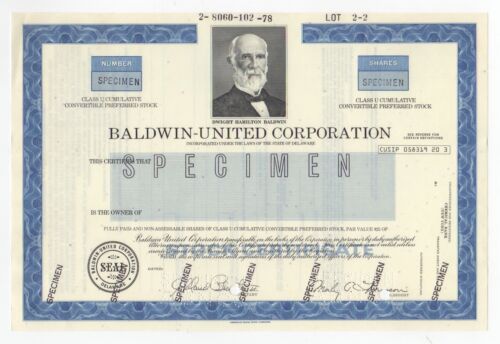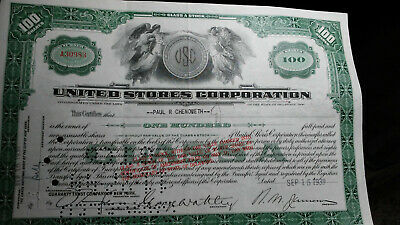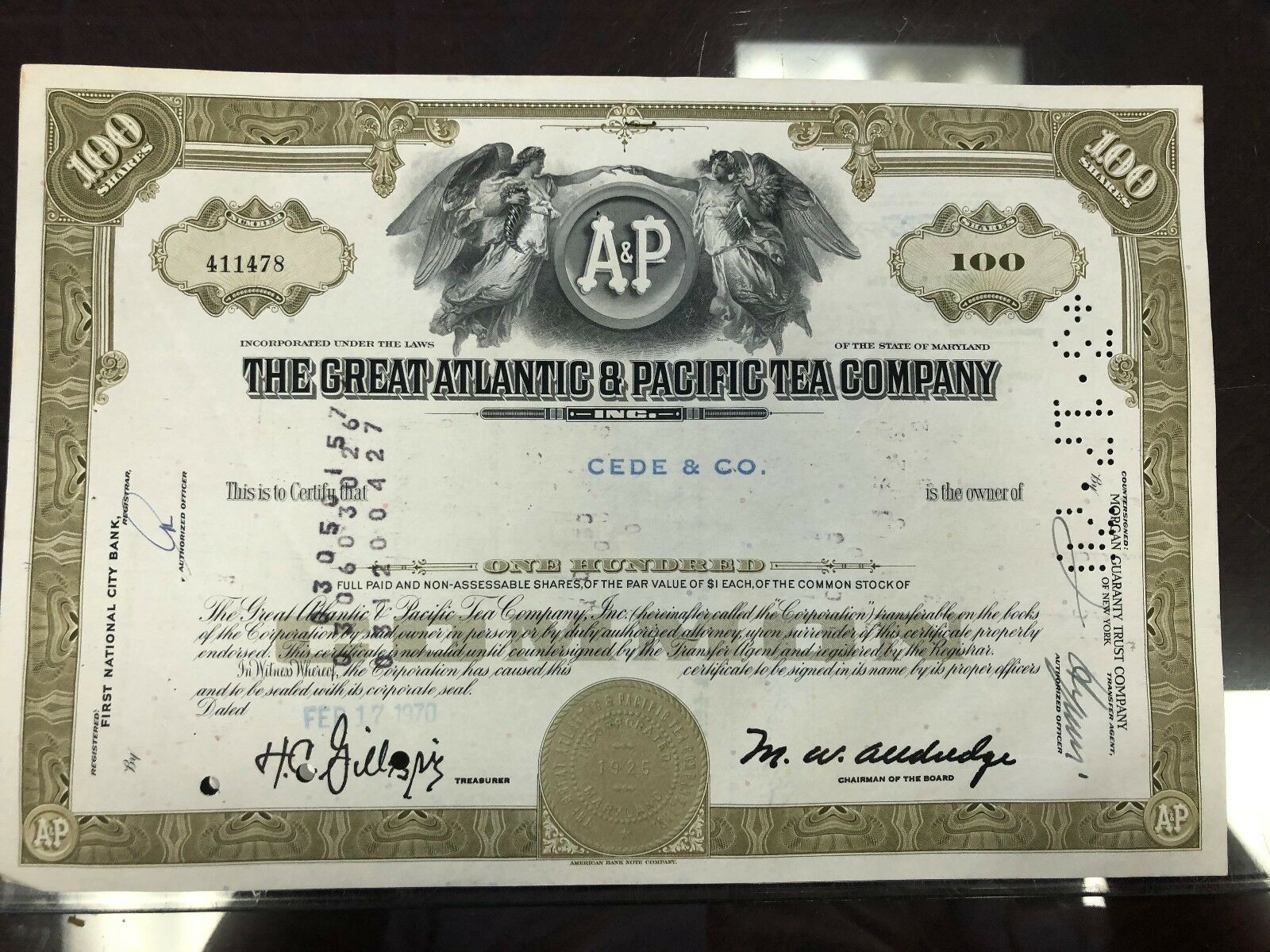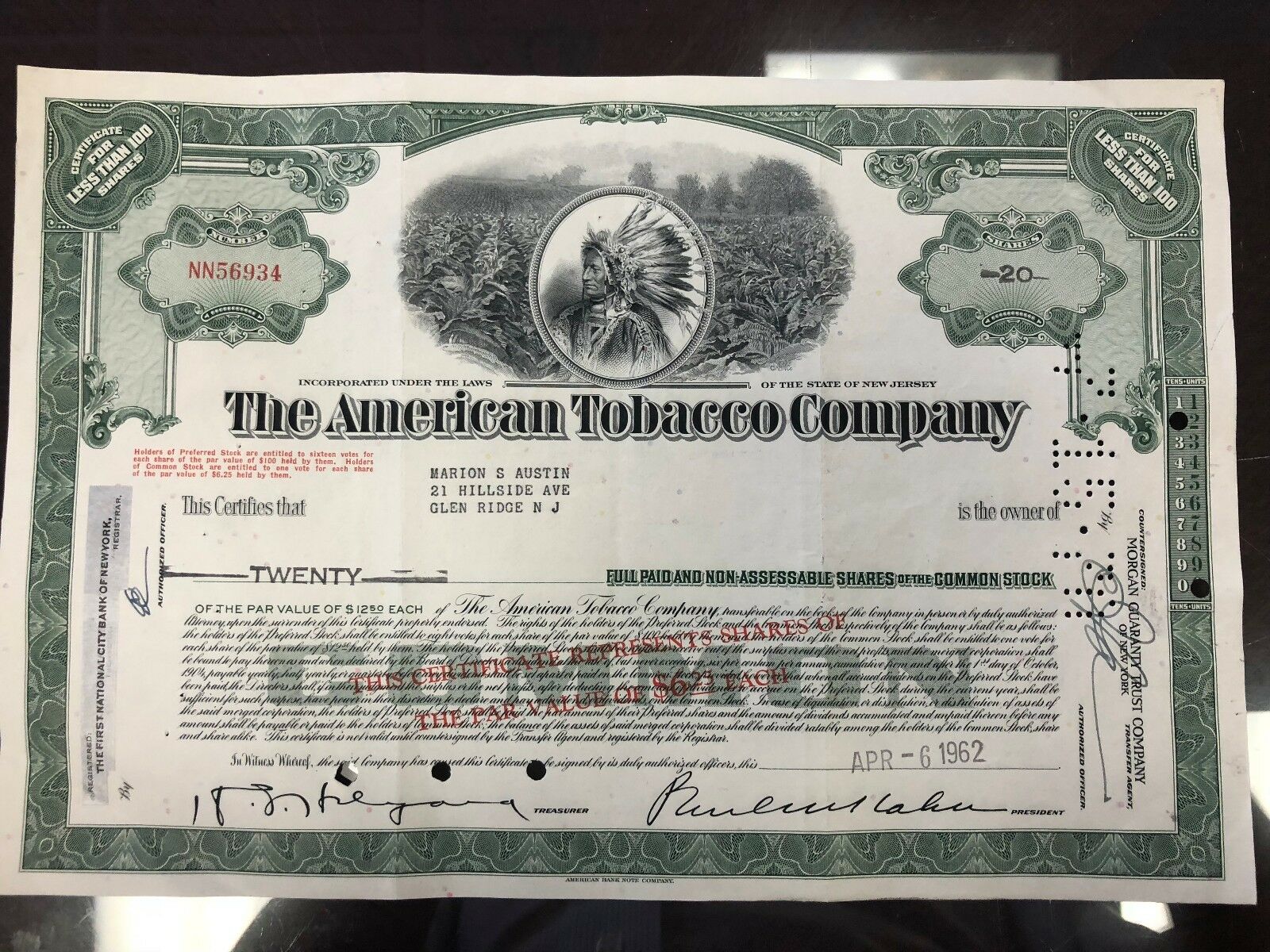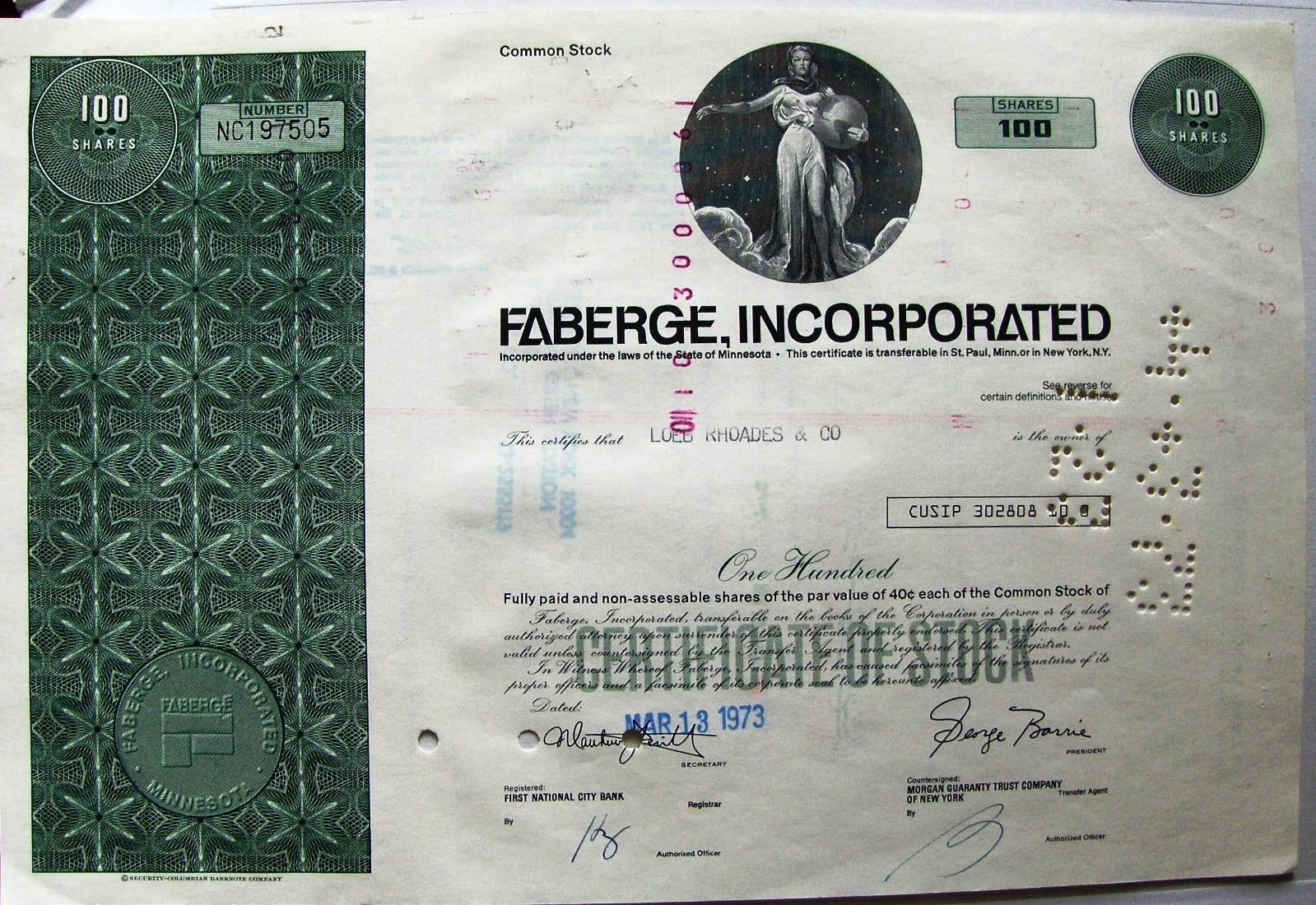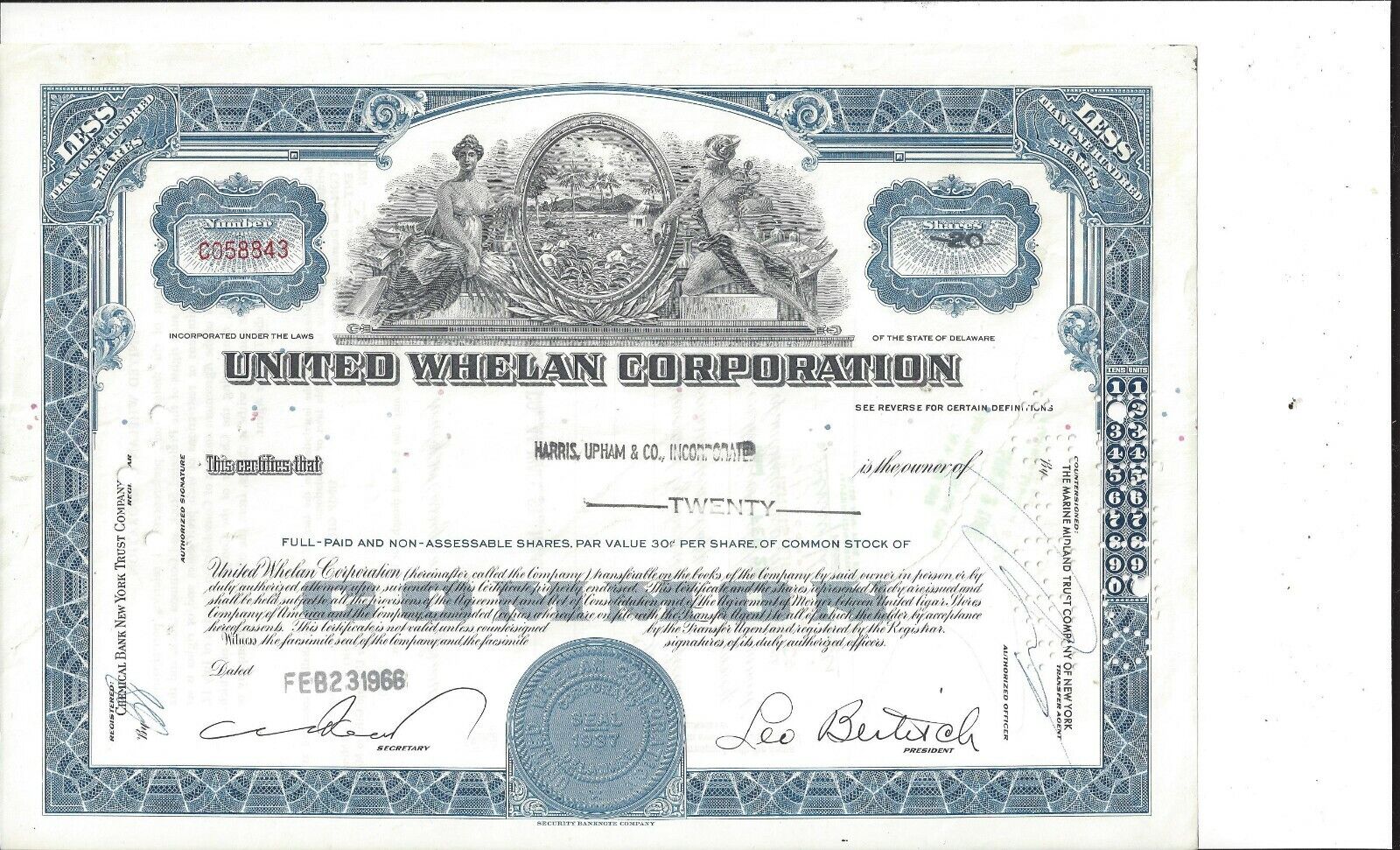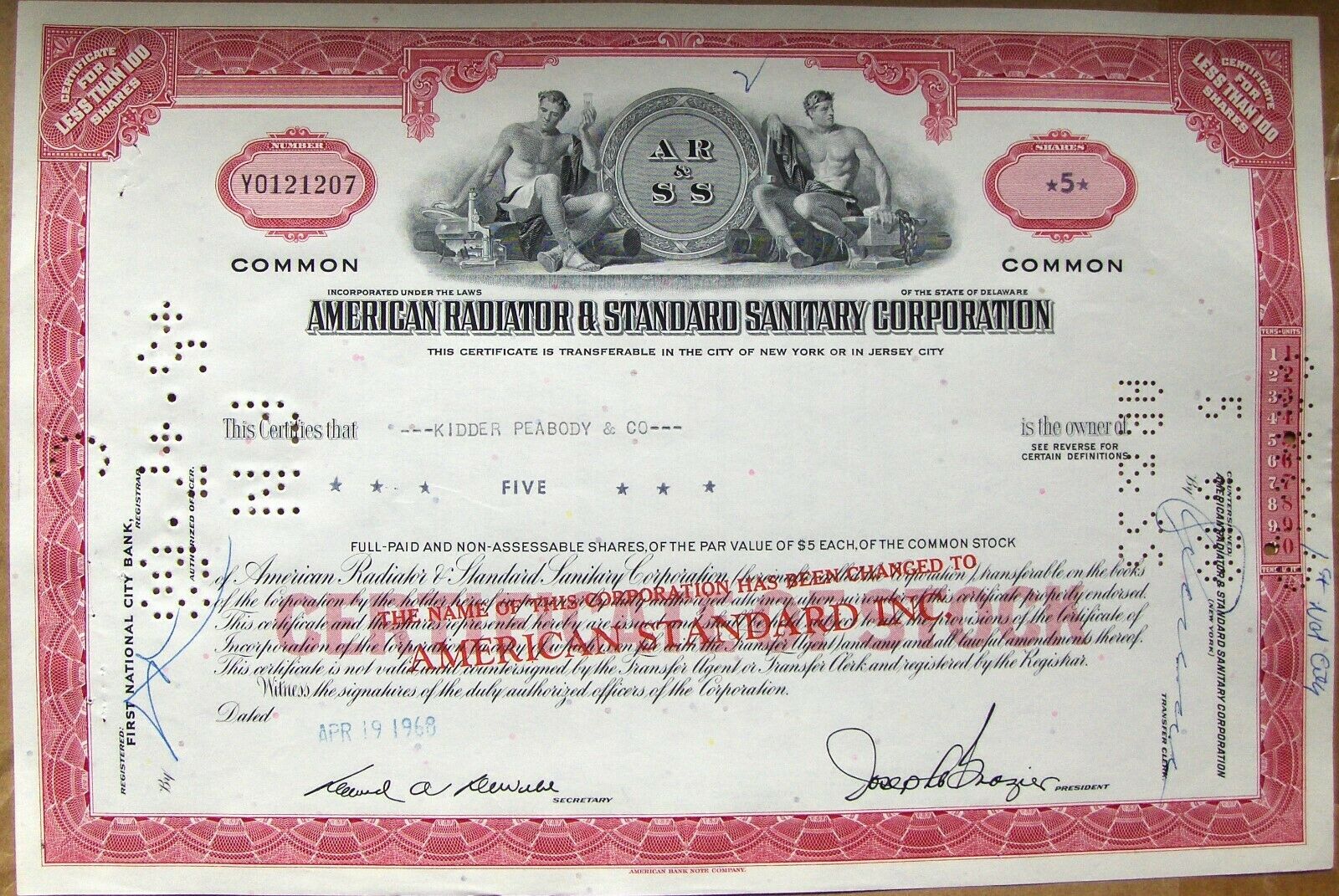-40%
SPECIMEN - Baldwin-United Corporation Stock Certificate
$ 19.95
- Description
- Size Guide
Description
SPECIMEN - Baldwin-United Corporation Stock CertificateSPECIMEN - Baldwin-United Corporation Stock Certificate
k100
State - Delaware
Color - Blue
Size -8 in x 12 in
SPECIMEN
Printed by American Bank Note Company. Vignette is a picture of Dwight Hamilton Baldwin.
Founded in Cincinnati in 1862 by music teacher Dwight Hamilton Baldwin, the Baldwin company began as a retail seller of pianos and organs. From the start, D. H. Baldwin demonstrated a gift for hiring quality employees, one of whom was Civil War veteran Lucien Wulsin. Wulsin accepted a partnership in the company in 1873, and he and Baldwin established sales outlets in Louisville, Indianapolis, and several smaller cities. In 1899, the two began designing and building their own keyboard instruments. Three years later the Baldwin Piano Company was established, and the following year the partners shipped out the first piano manufactured under their own roof.
Both D.H. Baldwin and his wife died in 1899, designating that their 80 percent share in the company go to the Presbyterian Church. Wulsin purchased their stake, however, and subsequently merged the various Baldwin businesses to form The Baldwin Corporation. Under Wulsin's leadership, the company quickly achieved the goal of manufacturing "the best piano that could be built." A Baldwin concert grand won the coveted Grand Prix Award in Paris in 1900, then took top honors at World's Fairs in St. Louis (1904) and London (1914). Many prestigious artists—including Igor Stavinsky, Bela Bartok, and Wilhelm Backhous—made Baldwin grand pianos their instrument of choice.
In the early 1920s, in addition to manufacturing traditional pianos, Baldwin marketed player pianos in both grand and vertical styles. The popularity of these instruments fueled explosive growth during the first half of the Roaring Twenties, but with the advent of radio in 1927, the demand for "players" fell precipitously. That decline, combined with the Great Depression, forced many piano companies into bankruptcy. Abetted by a fund set aside for "unforeseen contingencies," however, Baldwin weathered the hard times, and by the end of the 1930s could rightly claim its place as the leading piano company in America.
Baldwin undertook pioneering sound-production research during this period, getting assistance from the Physics Department at the University of Cincinnati. These studies were interrupted in 1941, however, when the company's facilities were enlisted in the American effort during World War II. Baldwin applied its woodworking expertise to the manufacture of airplane wings and fuselage parts. As a result, new veneering techniques were developed, which subsequently became the basis for improved piano construction and greater tuning stability.
A booming postwar economy, combined with growing demand for organs for church and residential use, powered sales for Baldwin during the 1950s. As that decade ended, the company began moving its manufacturing operations from Cincinnati to locations in the South. Plants in Arkansas, Mississippi and Mexico eventually replaced the original factory. The period coincided with the introduction of the SD10 Concert Grand, an innovative piano that prompted TIME magazine to proclaim that the course of music would have been much different had Beethoven benefited from such an instrument. The SD10 has since become the favored instrument for countless artists.
The next three decades were marked by dizzying heights and challenging lows for Baldwin. Concurrent with an ongoing dedication to building quality instruments, the company entered the financial services industry in the 1970s, expanding into a billion conglomerate known as Baldwin-United Corporation. A decade later the conglomerate fell into bankruptcy, but in resilient fashion, the core business of Baldwin Piano and Organ emerged intact. Further challenges confronted the company in the ensuing years, culminating in another near-bankruptcy in 2001. In keeping with its colored history, however, exciting times and a phoenix-like rise lay just ahead.
SPECIMEN -
No certificates are accepted unseen from a printer. No matter how much checking has been done, there is always the chance of a typographical error creeping in and causing untold financial damage to the issuer. For this reason, prior to final printing a small quantity of "specimen" certificates will be produced by the printer for final verification. These items will usually be clearly marked "specimens" either by means of overprint or perforated cancellations holes. In some cases they can be further identified by a "0000" serial number.
Buy with confidence as we do not sell copies or reproductions. ANA & SPMC member. Free First Class shipping on this item in the US (Priority and Express available for additional cost at checkout)! outside the US. Click the vault below to visit my eBay STORE, with lots of BUY IT NOW items! We BUY currency too!
